
 |
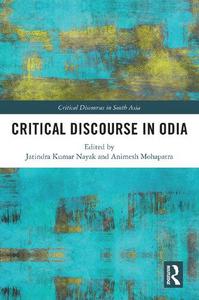 Critical Discourse in Odia By Jatindra Kumar Nayak (editor), Animesh Mohapatra (editor) 2021 | 360 Pages | ISBN: 1138504807 | PDF | 6 MB This volume forms part of the Critical Discourses in South Asia series, which deals with schools, movements and discursive practices in major South Asian languages. It offers crucial insights into the making of Odia literature and its critical tradition across a century. The book brings together English translation of major writings of influential figures dealing with literary criticism and theory, aesthetic and performative traditions, and re-interpretations of primary concepts and categories in Odia. It presents twenty-five key texts in literary and cultural studies from late-nineteenth century to early-twenty-first century, translated by experts for the first time into English. These seminal essays explore complex interconnections between socio-historical events in the colonial and post-Independence period in Odisha and the language movement. They discuss themes such as the evolving idea of literature and criteria of critical evaluation; revision and expansion of the literary canon; the transition from orality to print; emergence of new reading practices resulting in shifts in aesthetic sensibility; dialectics of tradition and modernity; and the formation, consolidation and political consequences of a language-based identity.Comprehensive and authoritative, this volume offers an overview of the history of critical thought in Odia literature in South Asia. It will be essential for scholars and researchers of Odia language and literature, literary criticism, literary theory, comparative literature, Indian literature, cultural studies, art and aesthetics, performance studies, history, sociology, regional studies and South Asian studies. It will also interest the Odia-speaking diaspora and those working on the intellectual history of Odisha and Eastern India and conservation of language and culture. 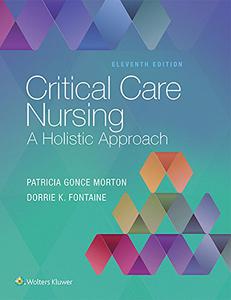 Patricia Gonce Morton RN PhD ACNP-BC FAAN, Dorrie K. Fontaine RN PhD FAAN, "Critical Care Nursing: A Holistic Approach" English | 2017 | ISBN: 1496315626 | PDF | pages: 2271 | 54.1 mb Selected by Doody's as aCore Titlefor Critical Care Nursing in Health Science and deemed as an "Essential Purchase." 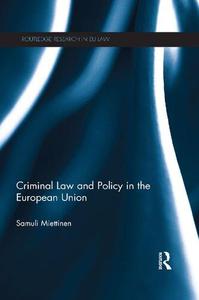 Criminal Law and Policy in the European Union By Samuli Miettinen 2012 | 304 Pages | ISBN: 0415474264 | PDF | 3 MB  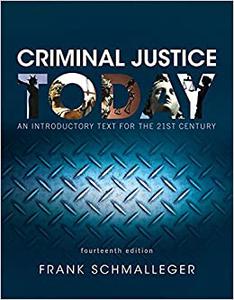 Frank Schmalleger, "Criminal Justice Today: An Introductory Text for the 21st Century" English | 2016 | ISBN: 0134145593 | PDF | pages: 737 | 115.5 mb The gold standard for introductory criminal justice texts. 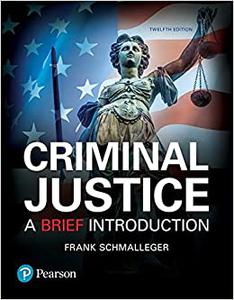 Frank Schmalleger, "Criminal Justice: A Brief Introduction" English | 2017 | ISBN: 0134548620 | PDF | pages: 543 | 26.3 mb For courses in Introduction to Criminal Justice 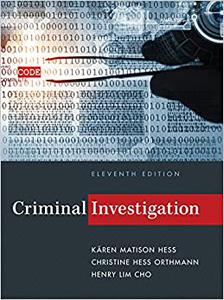 Christine Hess Orthmann, Henry Lim Cho, "Criminal Investigation" English | 2016 | ISBN: 1285862619 | PDF | pages: 787 | 52.2 mb Easy to read and well-organized, CRIMINAL INVESTIGATION, 11th Edition delivers a practical, field-based approach to the modern investigative principles and practices you need to succeed in criminal justice. Demonstrating techniques and their many applications, the book introduces long-standing tools, practices, and policies alongside the latest innovations in technology and science to give you a broad perspective of criminal investigations today. Topics covered include D.N.A. science, terrorism and homeland security, cybercrime, crimes against children, forensics and physical evidence, investigative photography and sketching, identity theft, white-collar crime, ethics, and many others. Examples and case citations show how investigations affect the world around you. The MindTap that accompanies this text guides you through your course and includes video cases, career scenarios, visual summaries, and interactive labs that allow you to explore investigative techniques.  Thomas J. Gardner, Terry M. Anderson, "Criminal Evidence: Principles and Cases" English | 2015 | ISBN: 1285459008 | PDF | pages: 560 | 29.1 mb What makes evidence admissible or inadmissible in court? You'll know the answer once you read CRIMINAL EVIDENCE: PRINCIPLES AND CASES, 9th Edition. Whatever your future career in the justice system, you can count on this book to outline all you need to know about criminal evidence and its use. Packed with stories and cases as well as the most up-to-date legal information available, it's the most relevant and engaging resource of its kind. 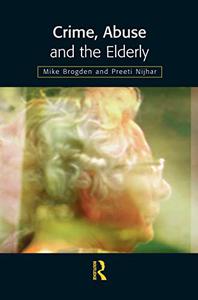 Mike Brogden, Preeti Nijhar, "Crime, Abuse and the Elderly" English | 2000 | pages: 201 | ISBN: 1903240034, 1903240026 | PDF | 4,4 mb This book examines and analyses the experiences of older people as both victims and perpetrators of crime. Drawing upon a wealth of research from British and North American sources, the authors detail the historical experience of the elderly as victims, the extent of present-day criminal victimisation in the home and institutions, the social theories which attempt to explain that experience, and the types of resolution available. 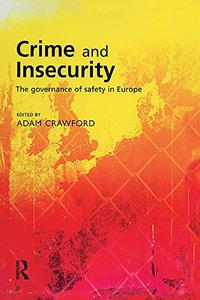 Adam Crawford, "Crime and Insecurity" English | 2002 | pages: 337 | ISBN: 1903240484, 0415627591 | PDF | 7,0 mb Concerns over insecurity and questions of safety have become central issues in social and political debates across Europe and the western world. Crucial changes have followed as a result, such as a redefinition of the role of the state in relation to policing - a central theme of this book - and an explosion in the growth of private policing.
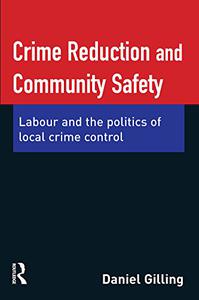 Daniel Gilling, "Crime Reduction and Community Safety: Labour and the politics of local crime control" English | 2007 | pages: 278 | ISBN: 1843922517, 1843922525 | PDF | 6,0 mb This book analyses Labour's policies of local crime control from 1997 through to 2006. Picking up on the Conservative legacy, it follows the establishment of local crime and disorder reduction partnerships and tracks developments from Labour's attempts to subject them to a centrally-imposed performance management regime, through to the emergence of a strong neighbourhoods agenda, combined with the imposition of a largely enforcement-oriented attack on anti-social behaviour. It also explores Labour's attempts to address the causes of crime through a policy agenda that has crystallised around themes of social exclusion, social capital, community cohesion and civil renewal; and that operates through an architecture that aspires to be joined up centrally and locally, and neighbourhood-based. |